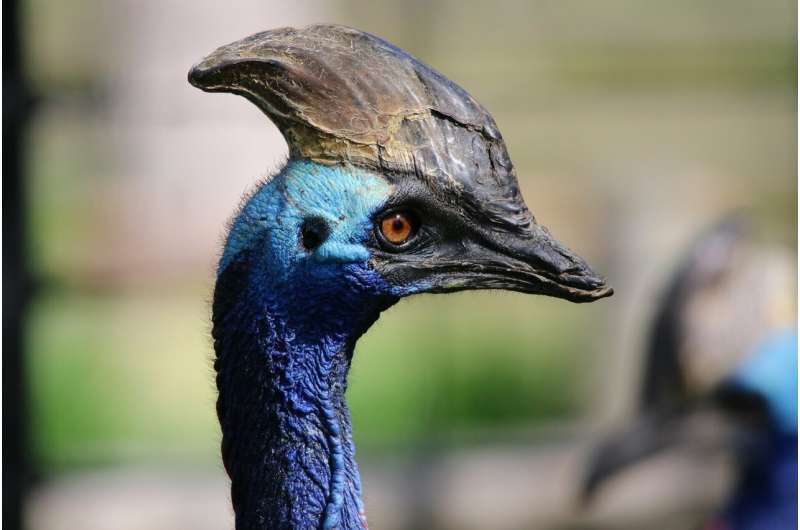Credit: CC0 Public Domain
A team of Australian scientists has completed research that could help solve a 200-year-old mystery surrounding an iconic Australian bird.
The La Trobe University researchers have published new evidence in Scientific Reports on the southern cassowary and its distinctive helmet—known as a casque.
Danielle Eastick, from La Trobe's Department of Ecology, Environment and Evolution and her team have shown the cranial structure acts like a radiator or "thermal window" to help the large, flightless birds keep cool in hot weather.
"Our results are quite compelling and it's highly probable this is what the casque is actually used for," Ms Eastick said.
"It's really exciting to think we may have solved a mystery that has baffled scientists for so long."
Using a handheld thermal imaging device, Ms Eastick obtained readings from 20 captive cassowaries, from Victoria through to northern Queensland and in different weather conditions.
The images showed that the birds released minimal heat from their casque when the weather was just five degrees and the greatest levels when the mercury reached 36 degrees.
Ms Eastick explained that as a large bodied, dark feathered creature, which is native to northern Queensland and Papua New Guinea, cassowaries face a thermal challenge in high temperatures.
"Just as humans sweat and dogs pant in hot weather or following exercise, cassowaries offload heat from their casque in order to survive. The hotter the ambient temperature, the more heat they release."
"The casque has caused considerable curiosity and speculation for nearly two centuries and animal experts have proposed various theories, including that it's a protective weapon used for fighting other animals or a means of attracting the opposite sex, but all are inconclusive."
The "thermal window" explanation may provide a rare glimpse into the physiology of dinosaurs.
"Many dinosaurs also had casques, so it's possible they too helped keep cool this way."
More information: Danielle L. Eastick et al, Cassowary casques act as thermal windows, Scientific Reports (2019). DOI: 10.1038/s41598-019-38780-8
Journal information: Scientific Reports
Provided by La Trobe University
























